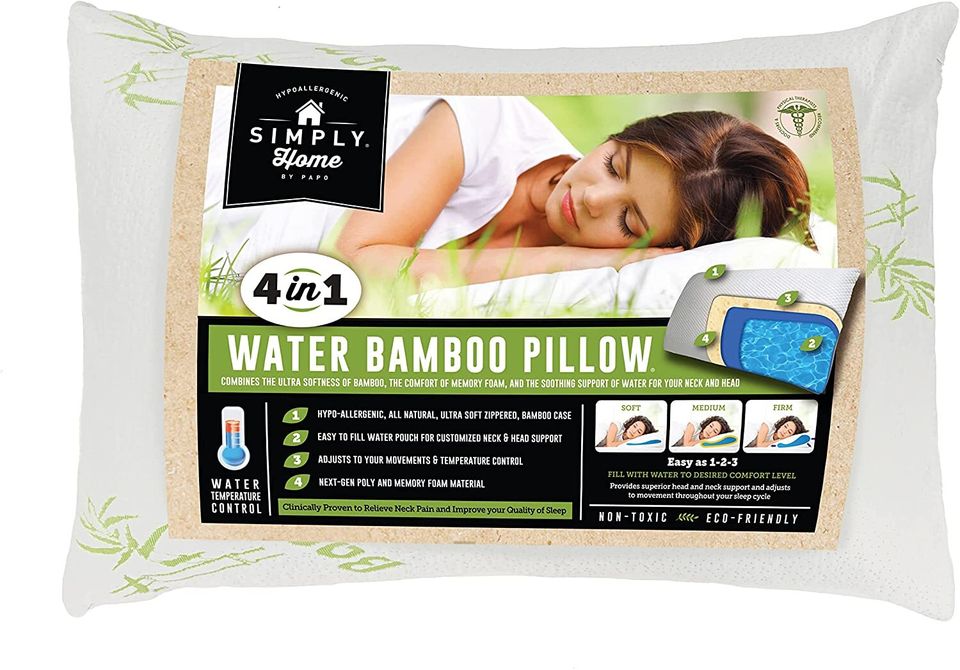
Taves said thinner pillows are ideal for back sleepers. "Back sleepers don't need much," he noted, "because if your head's propped up at night, it tends to increase the amount of stress to your neck. ...That would be one thing I think is worth considering."
Promising review: "I’ve been using this water pillow for the last three years and it’s changed my life. I used to suffer with neck pain daily and since using it I don’t have that problem anymore. I recently bought one for my son-in-law and my husband because I want them to have the same good experience and good health that I’ve experienced." — Janelle S.
Taves said wider memory foam pillows are ideal for side sleepers. "That's probably one of my best recommendations in regards to sleeping: Get a pillow that accounts for the width of your shoulders and look at foam ones that are going to hold their shape instead of you having to adjust in the middle of the night."
Promising review: "I filled my pillow to soft, it is so comfortable you just sink in like a cloud, being a stomach sleeper I get neck issues, not with this pillow, perfect support, I let my husband use it for a nap and now he has one, we both say it is the most comfortable pillow we have ever had, you won't be disappointed." — Monica Bertsch
"I tend to lean more on the side of pillows that don't allow for tossing and turning or your neck or your body trying to find a restful position," Taves said.
Promising review: "I have neck and shoulder problems and I have tried every pillow out there from memory foam to feather to My Pillow. This pillow is the only one that works! i can control the firmness and it doesn't go flat. Love, Love, Love, it!" — Lisa F.
One last note: Vovnoboy and Taves emphasize that if you’ve been in chronic pain or have lots of tension in your neck or back, you’ll want to see a physical therapist or trained medical professional.
“You definitely want to figure out the cause of the neck stiffness, neck pain back pain,” Vovnoboy said. “The PT will figure it out, and then we can kind of adjust the plan of care accordingly.”
Dan Ginader, a physical therapist at Tx:Team in Indianapolis, also stressed that while a saggy, old pillow may exacerbate existing neck and back issues, a pillow itself is not enough to completely resolve the underlying causes of pain.
“For the most part, body parts get tight and in pain because they are too immobile or too weak,” Ginader told HuffPost. “If pain comes on while doing something static, like working at a desk, it means more movement needs to be done during the day. Something as simple as neck stretches or shoulder rolls a few times a day to break up that static posture can make a huge difference.”



